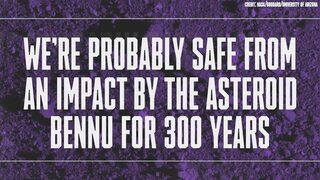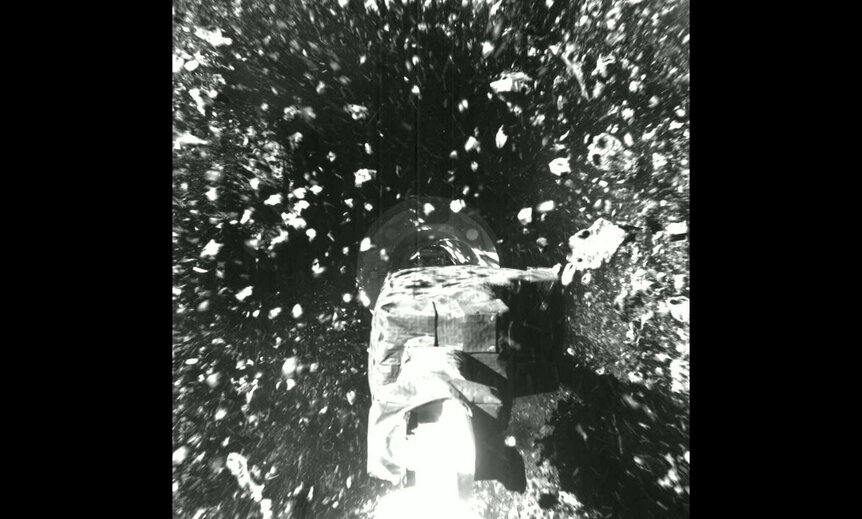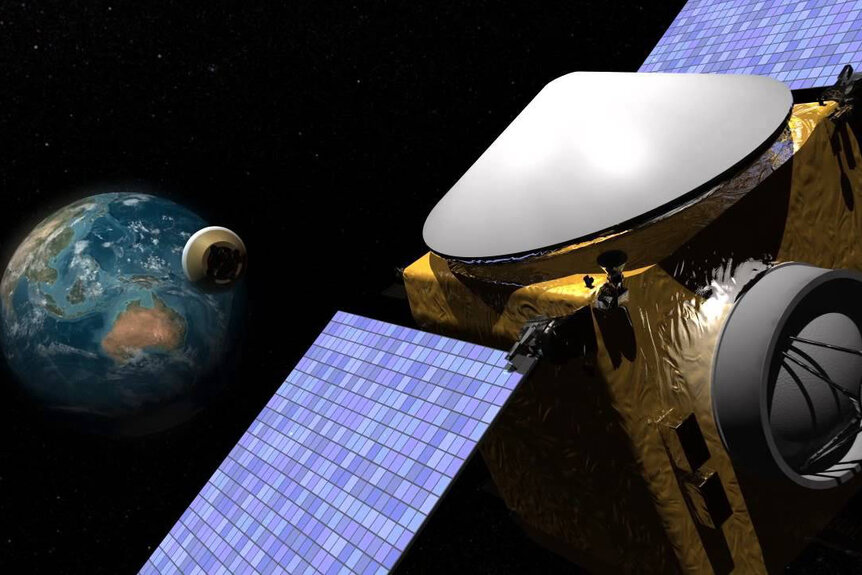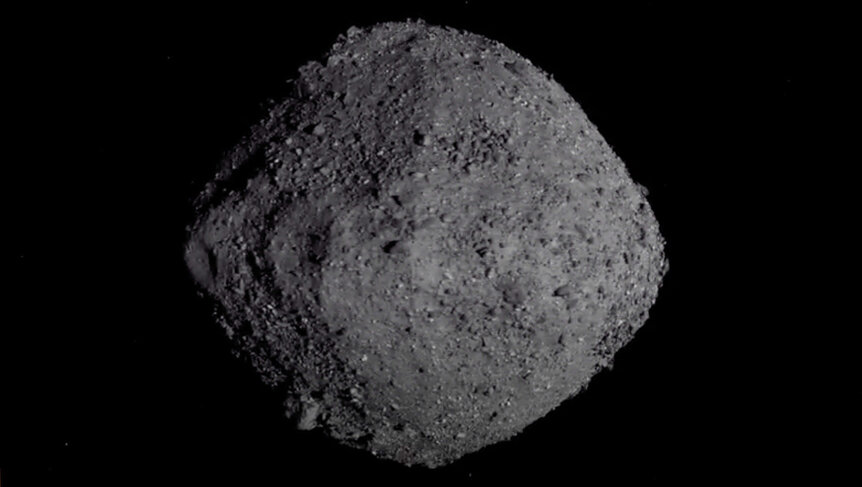Create a free profile to get unlimited access to exclusive videos, sweepstakes, and more!
NASA's OSIRIS-REx Asteroid Impact Avoidance Mission Is Coming Home with an Asteroid Sample
Just a heads up, but the sampled asteroid Bennu could impact Earth in 2182.
Wes Anderson’s latest film Asteroid City (streaming now on Peacock) features a story within a story, two tightly connected narratives whirling around one another under the force of their collective gravity. There is a play nested inside of the movie (or is it a movie nested inside of a play?) and all of it orbits a meteor fragment and the crater it made.
We love a good crater as much as anyone, but we’re not really in the market for a new one, which is why scientists are actively tracing near-Earth objects (NEOs) in the hope of protecting our cosmic shores. We have a pretty good handle on most of the potentially hazardous impactors in the neighborhood, and the vast majority aren’t any concern. One or two, however, have an outside chance of hitting us in the relatively near future.
RELATED: Incredible Footage of OSIRIS-REx Tagging an Asteroid
When the asteroid Bennu was discovered in 1999, astronomers modeled its trajectory into the future and found a small (but big enough) possibility that it would strike the Earth sometime in the next few centuries. At roughly a third of a mile wide, it’s not large enough to threaten the planet, but it would be devastating, so we have a vested interest in making sure that doesn’t happen.
To that end, NASA launched a mission to Bennu with the aim of investigating the asteroid, mapping its surface, and stealing a piece to bring back home. After seven years in space, NASA’s OSIRIS-REx mission is headed home, with a planned landing on September 24.
NASA Sent a Spacecraft to Study Potentially Hazardous Asteroid Bennu
NASA’s Origins, Spectral Interpretation, Resource Identification, Security-Regolith Explorer (OSIRIS-REx) mission is the United States’ first asteroid sample return mission. It launched from Cape Canaveral on September 8, 2016, and after a short time in low-Earth orbit, shot off toward Bennu.
The spacecraft first set eyes on Bennu roughly two years later in August 2018, when it snapped a picture of the asteroid from 1.4 million miles away. It arrived four months later on December 3, 2018, and settled into a cozy orbit around the asteroid. OSIRIS-REx spent nearly two years circling Bennu, mapping its surface, and looking for a suitable place to touch down.
That was particularly challenging on Bennu, because it’s not the sort of asteroid you’re probably imagining. Instead of a massive chunk of rock hurtling through space, Bennu is a rubble pile asteroid, made up of a collection of loosely associated rocks, held together under the force of their collective gravity. It’s less like a missile hurtling through space and more like a tight swarm of cosmic buckshot.
On October 20, 2020, the spacecraft stretched out its collection arm beneath it (from the perspective of Bennu) and descended toward the surface. Only the arm touched the ground, such as it is, and only for about 6 seconds. During that time, the arm made contact with the surface, penetrated into the ground, and fired nitrogen to blast bits of the asteroid into the surrounding space for collection.
RELATED: Electrostatic repulsion may be lofting small rocks off the asteroid Bennu
Once it had scooped up enough material, OSIRIS-REx fired its thrusters and backed away from Bennu. It spent the next six months orbiting Bennu, making observations of its literal stomping grounds to see how the interaction may have changed the surface structure. Then, on May 10, 2021, it fired its engines full blast for seven minutes, ramping up to 600 miles per hour on the long journey back to space.
At the time of writing, OSIRIS-REx is almost home. It is expected to arrive September 24, at which point the sample return capsule will separate from the spacecraft and enter the atmosphere over North America. It will land at the Utah Test and Training Range in Utah’s West Desert. After recovery, it will make its way to a custom-built research facility.
Meanwhile, the spacecraft will travel on with a new mission and a new moniker. The freshly christened OSIRIS-APophis EXplorer (OSIRIS-APEX) will head to Apophis, another asteroid with a small chance of one day striking the Earth.
What Would Happen if Bennu Hit the Earth?
Well, it definitely wouldn't be good if Bennu hit Earth. NASA estimates that any object smaller than about 25 meters across (80 feet or so) will burn up in the atmosphere, most of the time. Occasionally you might get some tiny meteorites scattered along the way. Any object over 25 meters is likely to get through the atmosphere with enough material left over to do some damage. Between 25 meters and a kilometer, an asteroid impact wouldn't threaten the species or the planet, but it would be locally catastrophic to the impact point and surrounding areas. Larger than a kilometer and we start to get into some pretty serious trouble.
Bennu is about half a kilometer across at its widest point, placing it firmly in the second category. It would be an incredibly bad day, but it wouldn't be our last. However, because Bennu is a rubble pile of loosely associated rocks, it's unclear how it would play out as it cut through the atmosphere. Fortunately, an impact is incredibly unlikely and we're already developing tools to address any asteroids or comets who get too close.
What Are the Odds Bennu Hits the Earth?
While NASA is hard at work studying potentially hazardous objects like Bennu, you shouldn’t lose any sleep worrying about an eventual impact. The combined probability that Bennu will hit us sometime in the next 300 years is only 1 in 1,750. The highest probability, based on current models, occurs on September 24, 2182, when the odds peak at 1 in 1,175.
The odds are slim, but there’s a lot we don’t know about how asteroids move. Interactions with other small objects, planets, and the Sun can all change an asteroid’s trajectory. Even solar radiation and off gassing can move an asteroid, making its future orbit less predictable. Studying asteroids like Bennu improves our ability to make predictions, build better models, and know for sure if we’re in danger.
Perhaps even more than that, the act of flying to an asteroid, snatching a piece of it, and bringing it back home is supremely cool.
Catch Asteroid City, streaming now on Peacock.

































